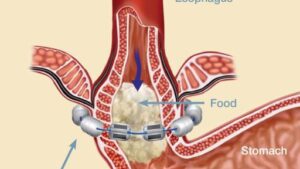The CAT exam pattern 2025 is a crucial component every MBA aspirant must understand before beginning their preparation journey. Common Admission Test (CAT) opens the doors of Indian B-schools, with the most prestigious ones being the Indian Institutes of Management (IIMs). The exam is challenging, and every year, more than 2 lakh candidates enroll in it. To pass, it is necessary to learn the structure and pattern of the exam. Being informed on the format, types of questions, and marking scheme allows aspiring students to plan and not get the unexpected on the day of the test.
Overview of the CAT Pattern and Mode of Examination
The CAT examination is taken in a computer-based approach in several hundred centers in India. The test is local, not internet-based, and runs on local systems in the exam centre. The candidates take the exam at one of the several time slots assigned on the same day. The test lasts two hours (120 minutes) and it contains three parts. The timeline of each section is 40 minutes, with a section locking when its time runs out. The candidate is not allowed to switch sections; this means that time management across sections is crucial in performance.
Section-Wise Structure of the CAT Exam Pattern for MBA
The CAT exam pattern for MBA admissions includes three key sections: Verbal Ability and Reading Comprehension (VARC), Data Interpretation and Logical Reasoning (DILR), and Quantitative Ability (QA). All five of these sections involve distinct skills. VARC tests your understanding, vocabulary, and grammar, whereas DILR will evaluate your skills in interpreting information and analyzing puzzles. QA assesses the skills in mathematics, which mainly entail the basics of mathematics taught at school, with a bias on application. There is merit in each of the sections, and most IIMs fix cut-offs at the sectional level and not at the aggregate level.
Type of Questions: MCQ and TITA
The CAT examination consists of both Multiple Choice Questions (MCQs) and Type in the Answer (TITA) questions. MCQs have four answers of which only one is correct. TITA-based questions, in their turn, have no choices: a candidate will have to insert a correct answer into an on-screen keyboard. Generally, TITA is more analytical and asks for conceptual clarity. The distinct advantage of TITA questions is the fact that they do not have negative marking, hence it is a low-risk solution for candidates who seek maximum score.
CAT Exam Pattern: Total Marks and Marking Scheme
The CAT exam pattern total marks are 204, based on the most recent structure. The paper will normally consist of 68 questions: 24 VARC, 22 DILR, and 22 QA. Correct responses to each answer will earn three marks, whereas incorrect MCQs will take one mark. TITA questions, nevertheless, do not have a penalty for incorrect attempts. This implies that your choices of questions are important, particularly on the timed test that you should answer accurately, as this will determine the overall mark. All the scores are subsequently scaled and normalized, which makes them fair in terms of several test sessions.
Understanding CAT Exam Pattern and Syllabus
While there is no officially declared syllabus, the CAT exam pattern and syllabus are predictable based on previous year trends. VARC questions are designed on the basis of passages on reading comprehension, para jumbles, and sentence completion. DILR consists of caselets, bar graphs, pie charts, and dichotomy puzzles. QA questions are based on number systems, algebra, geometry, and arithmetic. Practicing in all topics and examining past papers may assist candidates to learn the frequency and level of difficulty of each topic. It is as important and significant to know what you study as it is to study how.
Difficulty Level and Time Limits for Each Section
The CAT Preparation for the exam is characterized by a medium to challenging level of questions, and it will not be a rare case when one of the sections is made considerably harder. The time limit of 40 minutes in each section is strictly observed. The exam instantly moves to the next section once the time has elapsed. This is one of the reasons why time management is such an important aspect of preparation. The applicants have to be trained to know how to skip questions that are time-consuming. The art of dealing with sectional time control is practiced in actual test conditions.
Normalization in CAT and How Percentiles Are Calculated
In accomplishing fairness across the different time slots, CAT applies a normalization process. Because the level of questions can be somewhat different in various sessions, the scores are scaled. The overall and the sectional percentiles are calculated based on the normalized score. B-schools mostly use percentiles to shortlist the candidates, not the raw scores. After the exam, candidates can use knowledge about the scaling of scores and division into percentiles to understand whether they will be accepted to a leading MBA program.
Strategic Importance of Knowing the CAT Exam Pattern
The CAT exam pattern for MBA should be known clearly, and this assists the students in their goal setting. With the information on the number of questions, the type of questions, and the negative marking system, the aspirant will be able to devise a strategy that will be a middle ground between speed and correctness. The goal should be to solve the correct questions fast, as opposed to solving all questions. Having the pattern in mind, candidates are also able to take a test mimicking performance under test conditions. Preparation with patterns will make the process organized, and as such, most likely to lead to high scores.
Conclusion
Finally, the CAT exam pattern 2025 is set to test the ability of a candidate over three different areas in a rather structured manner. The exam is concerned with pace, precision, and intelligent decision making. It could be knowing the CAT exam pattern, total marks, or the right alignment of preparation with the CAT exam blueprint and the syllabus, but the aspirants will have to make the test an aspect of their strategy. That is why keeping track of the current pattern would stop surprises and keep one focused. And to everyone aspiring to enter a leading MBA course, the CAT exam pattern is the initial and the most important test to become a master.






